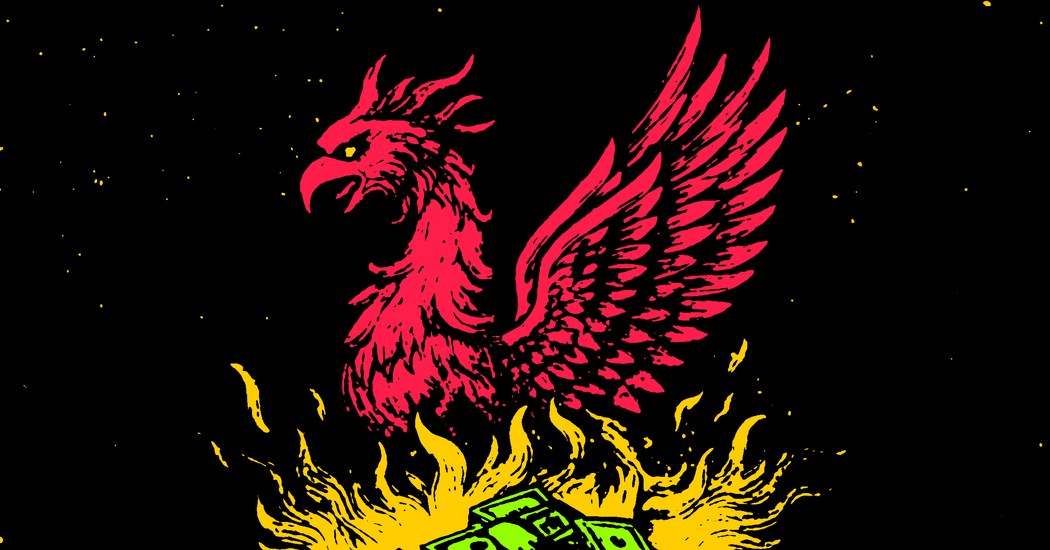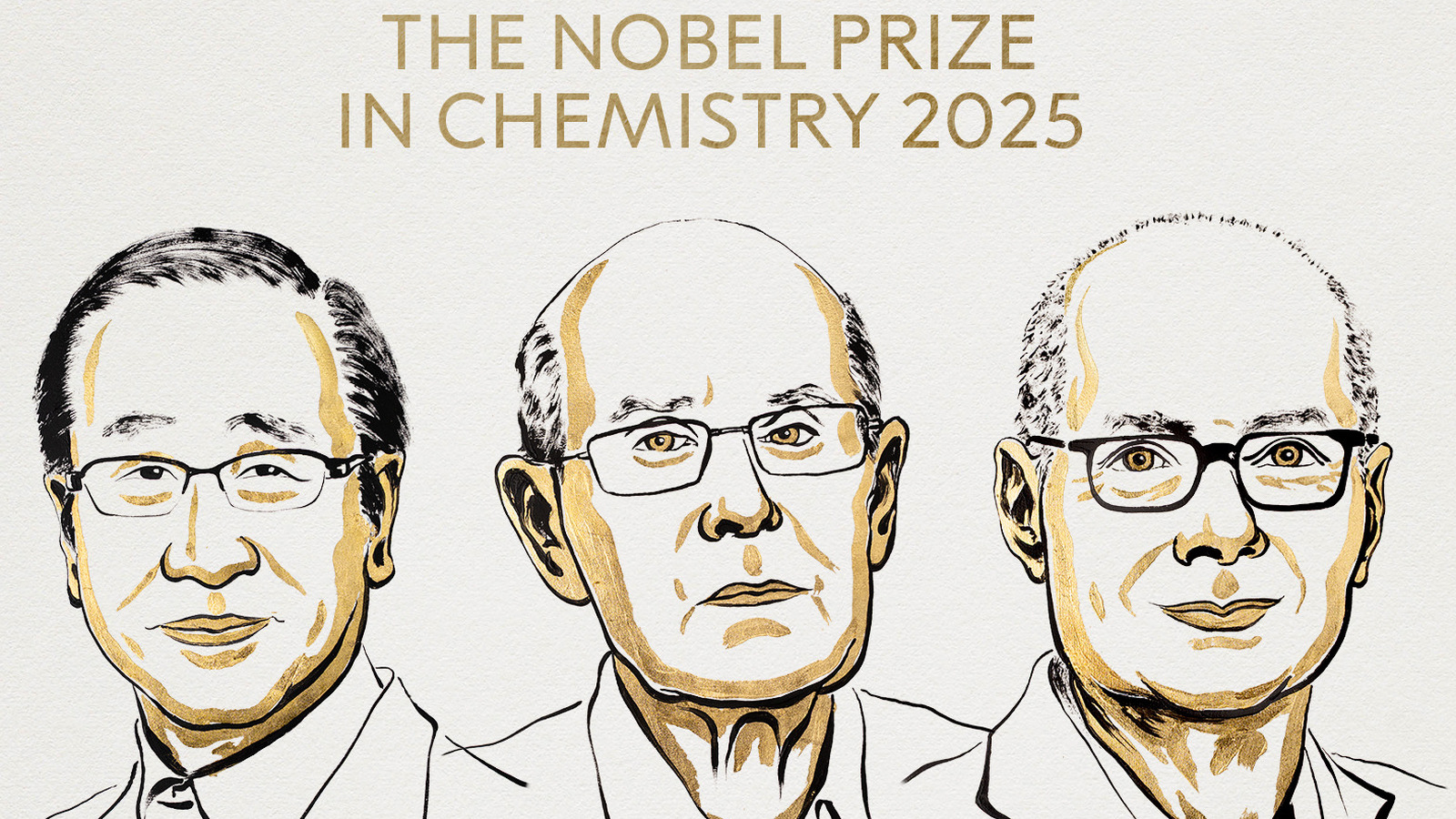Copyright The New York Times

Few things are more disconcerting than feeling the ground shift beneath you, as anyone who has experienced a serious earthquake knows. This is what we are living through. A way of ordering economic life — neoliberalism — that emerged in the 1980s is weakening rapidly. Once-heretical ideas such as raising tariffs have gained influence, and believers in the old order, plus almost everyone else, have become disoriented. Where are we heading? Are we subject to the whims of a madman? For the first time in most people’s memory, our economic future seems uncertain for a new reason: The immediate past cannot tell us what comes next. The good news is we’ve been here before. Protectionism and state ownership, after all, are hardly inventions of the 21st century. Our recent experience reminds us that capitalism does not mean stability. How could it, when capitalism is the most revolutionary economic order ever created? Capitalism is not conservative. Because it is fundamentally undogmatic, the direction in which it changes is unpredictable. Capitalism has radically shifted shape throughout its history. In the 1860s, a capitalist regime ruled by a landed gentry, powered by a wealthy merchant class and drawing on slave labor, gave way to an era in which titans of industry hired wage workers and liberal political regimes gained strength. In the 1930s, the Keynesian economic order replaced the small, austerity-focused, high inequality state of the 1920s with its tax cuts and belief in what was called “laissez faire.” During the 1970s, Keynesianism, emphasizing countercyclical economic policies, a powerful state sector and managed exchange rates, in turn reached an impasse and was replaced by what scholars such as Gary Gerstle have called the neoliberal order. And that held sway until very recently. Capitalism is a series of regime changes. Thinking about what unites them will help us better navigate the current reverberations and think more productively about the future. All these transitions, and perhaps the present one as well, were characterized by the inability of the old regime, in the face of economic crisis and rebellions, to reproduce itself. All featured disorientation, and an elite belief that a few tweaks to the old order would allow it to continue. All confronted a world in which the previous economic regime felt like the natural order of things — slavery in the mid-19th century, laissez faire in the 1920s, Keynesian interventionism in the 1960s and market fundamentalism in the 2000s. Not once was the old regime resurrected. Instead, capitalism forged ahead in entirely new directions. We had better accept this about today, as well. Such historical moments, as we recognize intuitively, are unsettling. They are also dangerous. With the future up for grabs, monsters rear their heads. As the Italian philosopher Antonio Gramsci observed during another period of upheaval, “The old is dead, but the new has not yet been born: In the interregnum, the most varied morbid phenomena occur.” What we are experiencing today is a rejection of many of the core tenets of the neoliberal order that has shaped our lives for the past half century. The Trump administration’s reworking of the domestic economy and international trade seem radical because the neoliberal order, under which we have lived for four decades, has been so thoroughly embraced. For decades, Democrats and Republicans, economists and commentators, agreed that trade was good and tariffs bad. The state provided an institutional framework in which markets operated, but there was no place in markets for active political involvement. Efficient production was globally integrated and talk of embedding supply chains within states was parochial, even retrograde. Independent institutions that were insulated from politics, like the Federal Reserve, were seen as pillars of American capitalism. Year after year, politicians, bankers and economists reaffirmed their almost religious belief in the merits of markets at a pilgrimage site high in the Swiss Alps: the World Economic Forum at Davos. The neoliberal revolution emphasized deregulation, freer trade, central bank independence and globalized production chains. It downplayed the importance of borders. The container ship, a revolutionary innovation, accelerated the circulation of goods in ways once unimaginable. Investors became able to move capital around the globe at the press of a button. Manufacturing shifted from Europe and the United States to Asia. Some of the smallest states in the world became crucial nodes in that neoliberal empire of capital, testifying to its indifference to territory, and the dream of an ever more frictionless world of global economic interactions seemed to become real. To be sure, the state mattered hugely to that order too — but it claimed to play an auxiliary rather than a central role, merely allowing markets to do their invisible work. This was never going to last. Such seemingly stable orders never do. The centuries-long history of capitalism shows that economic regimes change drastically in ways that are never linear, but always clustered — long periods of relative stability punctuated by moments of rapid change, like today’s. What did these past regime changes have in common? Most basically, they surprised and confounded the people living through them. When the Union general John C. Frémont freed enslaved workers in Missouri in September 1861, the British journal The Economist, though generally opposed to slavery, anxiously reported that such a “fearful measure” might “inflict utter ruin and universal desolation on those fertile territories.” In the twilight of these regimes, contemporaries often believed a few small changes would revert the world to its previous state, that they were not living through regime change but a temporary crisis. In 1972, the United Nations reported that “there is no special reason to doubt that the underlying trends of growth in the early to middle 1970s will continue much as in the 1960s.” They did not. In all these times, the shape of the newly emerging regime could be seen only in retrospect. When slavery was abolished, industrial capital rose to pre-eminence, nation-states grew in scale and scope and the power of landowning elites was clipped. Few had a sense what this new industrial capitalist order would ultimately be like. When the first New Deal laws passed in 1933, it would have been hard to envision the fully formed New Deal order that was so clear a decade and a half later. And when the United States deregulated airlines and the world adopted new trade rules in the 1970s, few could imagine the all-encompassing neoliberal order we later took for granted. No Great Man theory of history explains these transitions. They were instead shaped by the deep crises of the previous regime. The Keynesian economic order and lavish spending on the Vietnam War brought first escalating inflation and then unemployment, just when the shifting shape of the world economy began undermining American manufacturing. After 1973, productivity gains and economic growth rates slowed compared to the 1950s and 1960s. Forty years earlier, the Great Depression’s job losses, bank failures and deepening poverty convinced millions of Americans to turn against the old order. Seventy years before that, mercantile capitalism’s urban misery, rural violence — especially slavery — wars and recurrent economic crisis did the job. The crises, on their own, would not have brought down these regimes. Economic regime change has always been accompanied by popular and elite rebellions whose significance often came into sharp relief only once the new regime had consolidated. The old regime capitalism of the 18th and 19th Centuries was assaulted from three directions. Enslaved workers in the Americas pushed against their enslavement in a series of revolts, ranging from the Haitian revolution that began in the 1790s to the “general strike,” as W.E.B. DuBois put it, that was the American Civil War. At the same time, the newly mobilized industrial proletariat, largely concentrated in small pockets of Europe and the United States, engaged in unending protests, walkouts and open rebellion. And on an elite level, those whose wealth came from manufacturing and modern farming confronted the deeply entrenched power of agrarian elites and demanded a state aligned with their interests, not those of landlords. This tension found expression in the European revolutions of 1848, the American Civil War and the emergence of a new political force: the Republican Party, then the party of antislavery, urban industrial elites, manufacturing workers, farmers and protectionism. In the 1930s, as the Depression hit most of the world, insurgents on the left and the right, elites and commoners, challenged the existing order. Everywhere, fascist movements were on the ascent, and even where they failed, as in the United States, they demanded a more activist state, an end to liberal democracy and an embrace of a radicalized form of economic nationalism. At the same time, popular movements from the left pushed equally hard against the old order, demanding state ownership of industry, the expansion of welfare states, union power and in some cases the end of capitalism. In the 1960s, the work was done by popular and left-wing movements. The civil rights movement sought to overcome the racial hierarchies on which the Keynesian regime, like those before it, was built. The student movement fought both the deep militarization of the Keynesian order and what they perceived as the stultifying boredom of a life shaped by corporate liberalism. At the same time, an insurgent women’s movement pushed against the Keynesian order’s inherent patriarchy. Less visible at first, but in the end deeply influential, elite movements among business owners combated the Keynesian order and mobilized politically, capturing the Republican Party, building a series of think tanks and endeavoring to build a new narrative of the capitalist civilization. We appear to be at such a transition again. The neoliberal order has descended into crises. Inequality has soared. The rate of productivity growth in many advanced economies has stalled. Huge parts of the manufacturing economy in the Atlantic heartlands of capitalism lie devastated, and the environmental limits of a civilization built on fossil fuels are clear. Since the financial crisis of 2008, these deep structural problems have accelerated. At the same time, the world order that propped up neoliberalism has been shattered by the rapid rise of China. And the allegedly ironclad link between capitalism and liberal democracy, so pronounced in Francis Fukuyama’s notion of “the end of history,” has been questioned, even demolished, by the rise of authoritarian regimes in Hungary, Turkey and, now, the United States. Popular and elite rebellions have chipped away at the neoliberal edifice as well. Some go back a long time. From the left, there were the rebellions in Chiapas in 1994, the protests against World Trade Organization in Seattle in 1999 and Genoa in 2001, Occupy Wall Street in 2011 and the 2023 strikes over pension changes in France. On the right, we saw the Tea Party burst onto the scene in 2009, and the spread of right-wing populist movements — from the National Rally in France, the Alternative for Germany and the MAGA movement in the United States — that deeply objected to the neoliberal order, albeit for reasons quite different from those of the left. Today, the bête noire of neoliberalism, the politicization of markets, is rapidly making a comeback. One of neoliberalism’s central aims was to remove economic policymaking from democratic politics. The re-politicization of markets is occurring most visibly in the United States, where the Trump administration is pushing tariffs, meddling with business decisions and taking ownership stakes in companies such as Intel, but has traction elsewhere. China was never beholden to the neoliberal agenda. Europe is increasingly embracing such policies. This reorientation could be seen in the economic policies of the Biden administration, as well, with its efforts to shore up American manufacturing through the CHIPS and Science Act of 2022 and its huge spending on infrastructure. The abandonment of the neoliberal order seems contagious, just as its rise had been five decades earlier. If Davos was the symbolic pilgrimage site of the neoliberal era, the annual Conservative Political Action Conference may be emerging as the spiritual center of a new order. In introducing one of his tariff plans, Mr. Trump called free trade “a policy of unilateral economic surrender.” He referred to his desire to annex Greenland as “a large real estate deal.” This need not be our future. In the 1930s, when a previous global economic regime collapsed, two competing visions emerged: fascism and social liberalism. It was the decisive antifascist intervention of the world’s most powerful state, the United States, that determined which won out. Today, we face a similarly unsettled moment. We need to see that within this ambiguity lies opportunity. For better or worse, we will not return to the world we just left behind. If Americans want to challenge their country’s illiberal turn, they need to stop clinging to the recent past. Like other economic regimes before it, it is gone. Resurrection is impossible and to aim for it is politically disastrous. With the neoliberal consensus fracturing, we may be able to think beyond its constraints, to envision new ways of organizing our economic life. As the compulsive worshiping at the altar of the market ends, we can ask ourselves new questions: How can we organize an economy that lets all Americans flourish? How can we make sure that the spectacular wealth of our society benefits everyone? How can we pass on to our children and grandchildren an environmentally sustainable economy? If A.I. should result in significant productivity growth, how do we make sure that more than a tiny minority of oligarchs will profit? We must imagine and shape the possibilities ahead, not least to avoid Gramsci’s “morbid phenomenon” that stare at us, right now, from close proximity.



